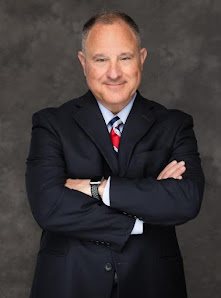The measure would bar police from using lethal force unless
it is “necessary” to defend against an imminent threat of death or serious
bodily injury to officers or bystanders. It was prompted by public outrage over
fatal police shootings, including the killing of unarmed vandalism suspect
Stephon Clark in Sacramento last year.
The current standard lets officers kill if they have
“reasonable” fear they or others are in imminent danger, a threshold that makes
it rare for officers to be charged following a shooting and rarer still for
them to be convicted.
“With so many unnecessary deaths, I think everyone agrees
that we need to change how deadly force is used in California,” said Democratic
Assemblywoman Shirley Weber of San Diego, who wrote the measure. “We can now
move a policy forward that will save lives and change the culture of policing
in California.”
The issue has spawned emotional testimony from those who
have lost loved ones in confrontations with police and from officers who have
been involved in shootings on the job.
Law enforcement officials did not explain their decision.
But a revised version of the bill filed Thursday drops an explicit definition
of “necessary” that was in the original. The deleted language said officers
could open fire when there is “no reasonable alternative.”
The amended measure also makes clear that officers are not
required to retreat or back down in the face of a suspect’s resistance and
officers don’t lose their right to self-defense if they use “objectively
reasonable force.”
Amendments also strip out a specific requirement that
officers try to de-escalate confrontations before using deadly force but allow
the courts to consider officers’ actions leading up to fatal shootings, said
Peter Bibring, police practices director for the American Civil Liberties Union
of California, which proposed the bill and negotiated the changes.
“The courts can still consider whether officers needlessly
escalated a situation or failed to use de-escalation tactics that could have
avoided a shooting,” he said.
The ACLU considers the revised measure to still have the
strongest language of any in the U.S., though legal experts split on the
significance of Thursday’s changes.
“This is so watered down,” said Ed Obayashi, a use-of-force
consultant to law enforcement agencies and a Plumas County deputy sheriff. “The
language is virtually legally synonymous with current constitutional standards
for use of force. It really is a distinction without a legal difference.”
But University of South Carolina law professor and former
Tallahassee, Florida, police officer Seth Stoughton called it a significant
change to current state law.
The revised bill “does a better job than any law that I’m
aware of in defining what is an imminent threat,” he said.
“It doesn’t do everything the original bill had in it, but
it brings California from the lowest tier in the country in to the highest tier
in the country and you’re left with a feasible, reasonable standard that I
think is going to go a long way to protecting officers and community members,”
Stoughton said.
Democratic Gov. Gavin Newsom and Democratic leaders in the
Legislature backed the revised version, which is set for an Assembly vote next
week. Newsom called it “an important bill, one that will help restore community
trust in our criminal justice system.”
Law enforcement opponents blocked passage of a similar
measure introduced last year after police killed Clark, an unarmed black man.
The death set off intense protests.
The Peace Officers Research Association of California, which
represents rank-and-file officers, and the California Police Chiefs Association
both removed their opposition and moved to neutral positions. The groups were
the key law enforcement negotiators with Weber’s office and the ACLU.
Six other associations representing state, county and local
law enforcement officers and the California Statewide Law Enforcement
Association all also withdrew their opposition.
Law enforcement organizations are backing a related Senate
measure that would require that every officer be trained in ways to avoid
opening fire.
To read more CLICK HERE








No comments:
Post a Comment